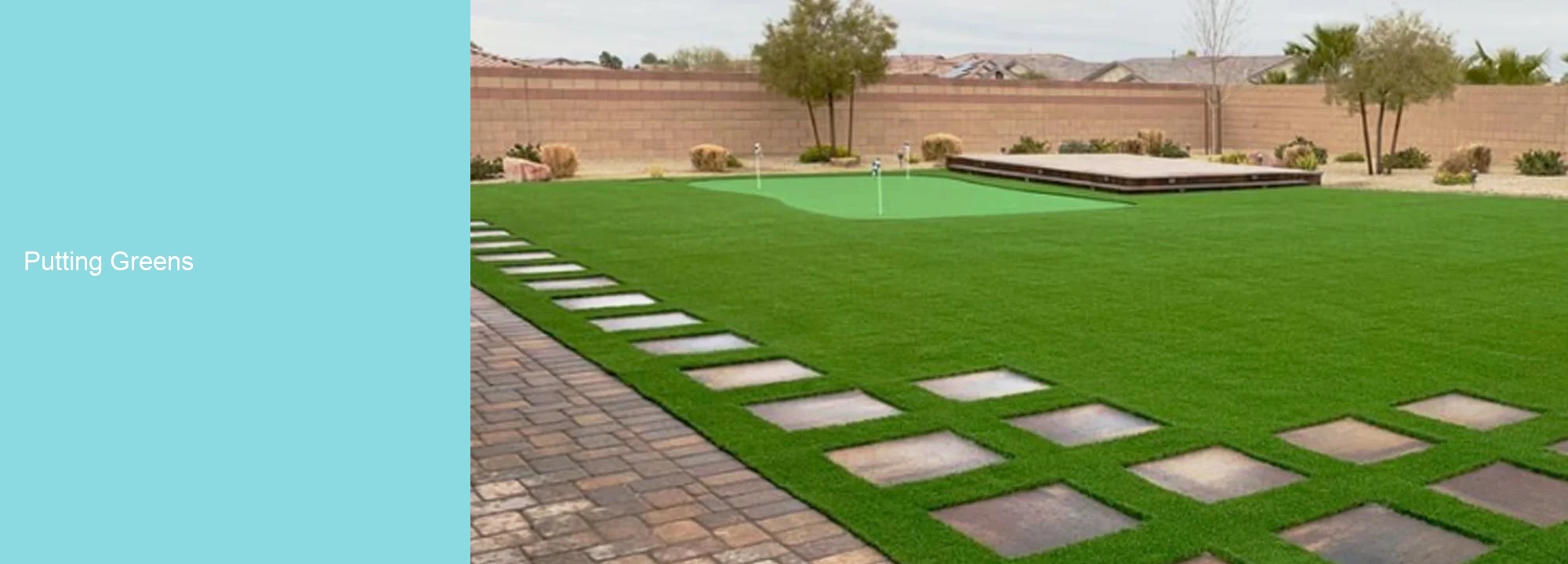

Having a putting green in your backyard is the perfect way to enhance and refine your golf skills. It gives you the advantage of being able to practice at any time without the need to travel to a golf course. The convenience of having this facility at home allows regular practice, which aids in improving one's short game skills significantly. Moreover, it provides an opportunity for personalized practice sessions focused on individual weaknesses.
In addition to skill enhancement, installing a putting green in your backyard promotes physical activity and wellness. Golf is known for its low-impact nature that makes it suitable for all age groups. Regularly engaging in golf activities can help maintain flexibility, improve coordination and balance, and boost overall health. Thus, having access to a personal putting green encourages consistent physical activity while enjoying the game.
Lastly, a well-maintained putting green adds aesthetic value to your home. It transforms an unused portion of your backyard into an attractive feature that not only serves recreational purposes but also enhances the overall appearance of your property. This landscaping upgrade can potentially increase real estate value due to its unique appeal and functionality.
The first step in creating the perfect putting green is to select a suitable location in your backyard. The area should be flat, well-drained, and receive a good amount of sunlight. It's also important to choose a spot that's far enough away from trees and shrubs to avoid interference from roots and falling leaves.
Once you've chosen the right location, it's time to prepare the ground. Clear any debris from the area, remove sod if necessary, and level it using a shovel or rototiller. The soil should be compacted to prevent settling later on.
Not all grass types are suited for putting greens. You'll want to choose a variety that can withstand heavy traffic and close mowing. Creeping bentgrass is often used for this purpose due to its dense growth habit and smooth texture.
Next step involves laying down turf or seed. If you're using turf, ensure it's laid out flat with no wrinkles or gaps between rolls. If you opt for seeds instead, spread them evenly over the prepared ground at a rate recommended by the supplier.
Creating your own putting green doesn't end once the grass has been planted; regular maintenance is required to keep it looking its best. This includes frequent mowing at a low height setting (about 1/4 inch), watering regularly but lightly (to avoid soaking), aerating as needed, and applying fertilizers designed specifically for golf greens.
Maintaining the pristine condition of your backyard putting green requires regular upkeep. Regular mowing, watering, and fertilizing are crucial to keep the grass healthy and vibrant. The ideal mowing height for a putting green is about 1/8 inch, which might require you to mow every three days or so during the growing season. Watering should be done early in the morning or late in the evening to prevent water evaporation, while fertilizing should be done periodically based on the specific needs of your turfgrass variety.
Preventing damage is as important as daily maintenance when it comes to keeping your backyard putting green perfect. Be vigilant about signs of pests or disease that may harm your greens - yellowing grass, thinning areas, or small holes can all indicate problems. Additionally, consider aerating your lawn annually to promote root growth and improve drainage. If damage occurs despite preventive measures, prompt treatment can save your green from further harm. This might involve applying organic pesticides or fungicides, reseeding damaged areas, or even consulting with a professional turfgrass management expert if necessary.
To construct the perfect putting green in your backyard, you will need a variety of materials. The basic necessities include turf grass seed or synthetic grass, topsoil, and sand for the base layer. It's crucial to choose a grass type that is suitable for golf play like Bentgrass or Bermuda grass. If you opt for synthetic grass, ensure it's specifically designed for golf greens to replicate the ball roll on real courses.
Alongside these primary materials, other tools and supplies will be instrumental in constructing your putting green. Essential items include lawn rollers to level your surface, a garden spade and rake for preparing the ground, and seeding tools if you're using natural grass. To maintain the health of your putting green over time, consider investing in a good irrigation system as well as proper fertilizers and weed control products specific to your chosen turf type.
Your answer here
Your answer here
Your answer here